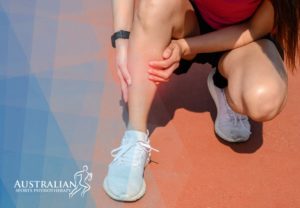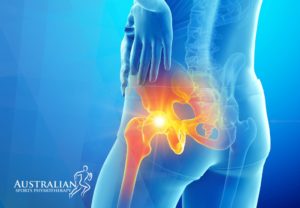Bursitis is a painful condition that can restrict movement. If you’re suffering from bursitis, you know how limiting the pain can be. It’s hard to enjoy life when there are certain movements that consistently hurt.
Our physiotherapists are experts in helping patients reduce pain and regain mobility. This could include manual therapy techniques such as massage or dry needling, exercises that target specific muscles or joints, education around movement patterns and posture or even advice on lifestyle changes that could help reduce the risk of reoccurrence.
We will work with you one-on-one to create a treatment plan that fits your unique needs and enables you to get back to living life without pain.
What is bursitis?
Bursa are fluid-filled sacs in the body. They are lined with a lubricating synovial membrane that secretes synovial fluid. Bursitis is defined as the inflammation of one or more of these bursa.
The human body contains over 150 bursa. Bursa are found where internal functionaries, such as muscles and tendons, slide across bone. These bursa create an almost frictionless, smooth surface for movement in a healthy body.
On the other hand, bursitis makes movement difficult and painful by relying on the inflamed bursa. Furthermore, moving tendons and muscles over an inflamed bursa aggravates the inflammation, exacerbating the problem.

Common causes of bursitis
A bursa can become inflamed and irritated by overuse, impact, or poor biomechanics. A bursa can cause pain and impede normal movement. As a result, altered biomechanics, abnormal load, and chronic inflammation can occur.
Several factors can cause bursitis to develop: direct impact to the bursa, mainly those located superficially (e.g., elbow, knee), repeated pressure (e.g., kneeling), and poor biomechanics (when movement causes the abnormal load to the joint and bursa).
Injuries are another common cause. Trauma from a fall can damage your bursa, causing pain and swelling in your joints.
Less common causes can be:
- Gout or arthritis in your joints.
- Bones pressing against your bursa.
- Infection.
Physiotherapy treatment for bursitis
Treatment with physiotherapy is critical in the treatment of bursitis. Physiotherapists employ unique movement tests and positions that can compress the bursa. Compression of the bursa reproduces the symptoms, allowing the physiotherapist to locate the source. Special tests are performed by a physiotherapist to confirm bursitis at each specific location of pain, such as the shoulder, elbow, knee, hip or heel.
Nonsurgical, conservative measures are almost always used to treat bursitis. Initial treatment options include rest from painful movements, activity/sports modification, and medication. Examples of medications include anti-inflammatory medications for pain and swelling and antibiotics for infections.
Ice, ultrasound, interferential current, and acupuncture can reduce pain and inflammation. We assess the biomechanics of the affected limb to identify contributing factors, including postural issues, muscle tightness, muscle weakness, and even footwear issues.
Exercises that improve joint function with painful bursitis almost always include stretching, strengthening, and movement retraining. Changes in shoe style or additional arch support, such as an orthotic, may be needed to treat heel bursitis.
Is physio good for bursitis?
Physio is good for bursitis since a physiotherapist can help reduce pain and promote recovery of the affected bursa by using a combination of massage, dry needling, electrotherapy, acupuncture and rehab exercises. In the case of bursitis caused by overuse, your physiotherapist can assist you in changing your routine to reduce the strain on your affected joint.
If you would like a detailed treatment plan, it is best to be evaluated by a physiotherapist who can assess your movement, posture, soft tissue length and strength, as well as your biomechanics.
What is the best exercise for bursitis?
Your physiotherapist may most likely recommend specific stretching and strengthening exercises after assessing your biomechanics to reduce your pain and improve your ability to move. When working with a physiotherapist and adhering to prescribed exercise regimens and activity modifications, excellent results are usually achieved.

Can you massage out bursitis?
Patients suffering from bursitis can benefit greatly from massage therapy. The body will recover and heal itself more quickly with massage therapy, as it relieves bursitis pain and increases blood supply to the tissues. The aim is to reduce compression and pressure on the bursa to treat bursitis.
Final thoughts on Physiotherapy for Bursitis
In some cases, untreated bursitis can lead to bone calcification (growth) within the bursa, leading to even more severe pain and disability.
Bursitis is often associated with other conditions, such as osteoarthritis and rheumatoid arthritis, complicating diagnosis. Alternatively, you could have torn tendons or ligaments that are causing the bursa to swell.
In rare cases, the doctor will inject cortisone into the bursa to “kick start” the recovery process, but this is the exception rather than the rule.
If you think you might have bursitis, consult one of our physiotherapists at Australian Sports Physiotherapy. Book an appointment today!









